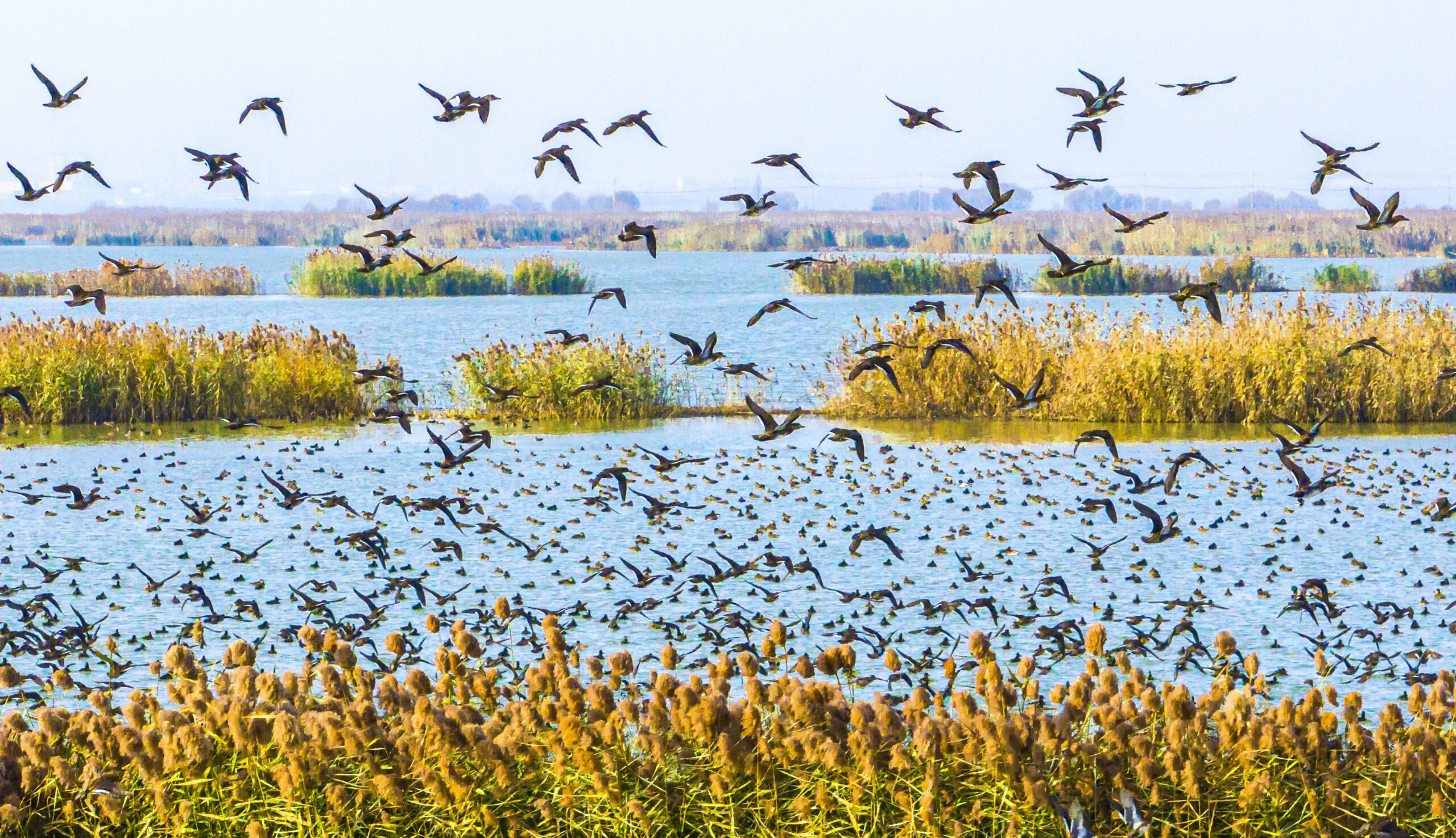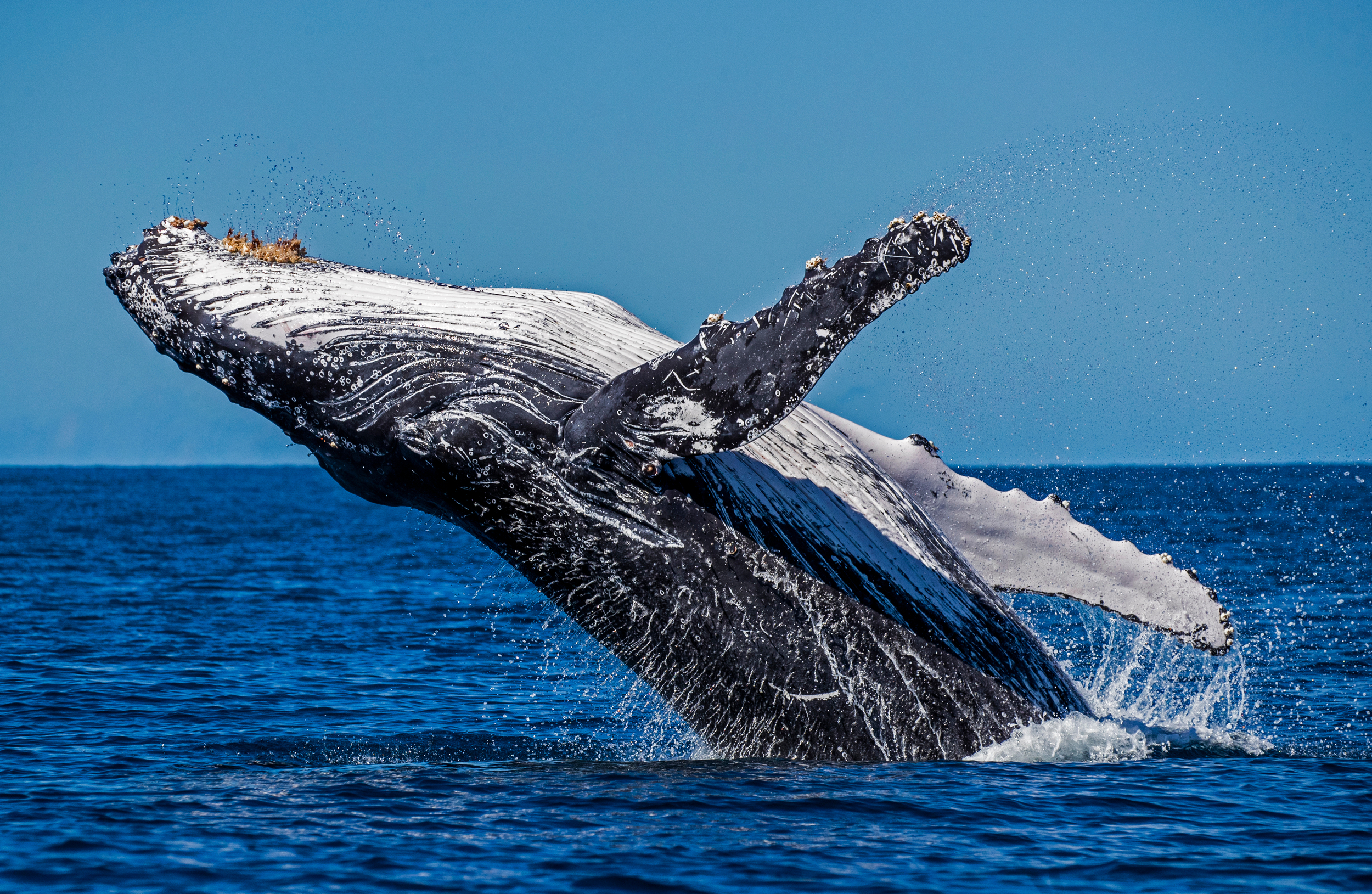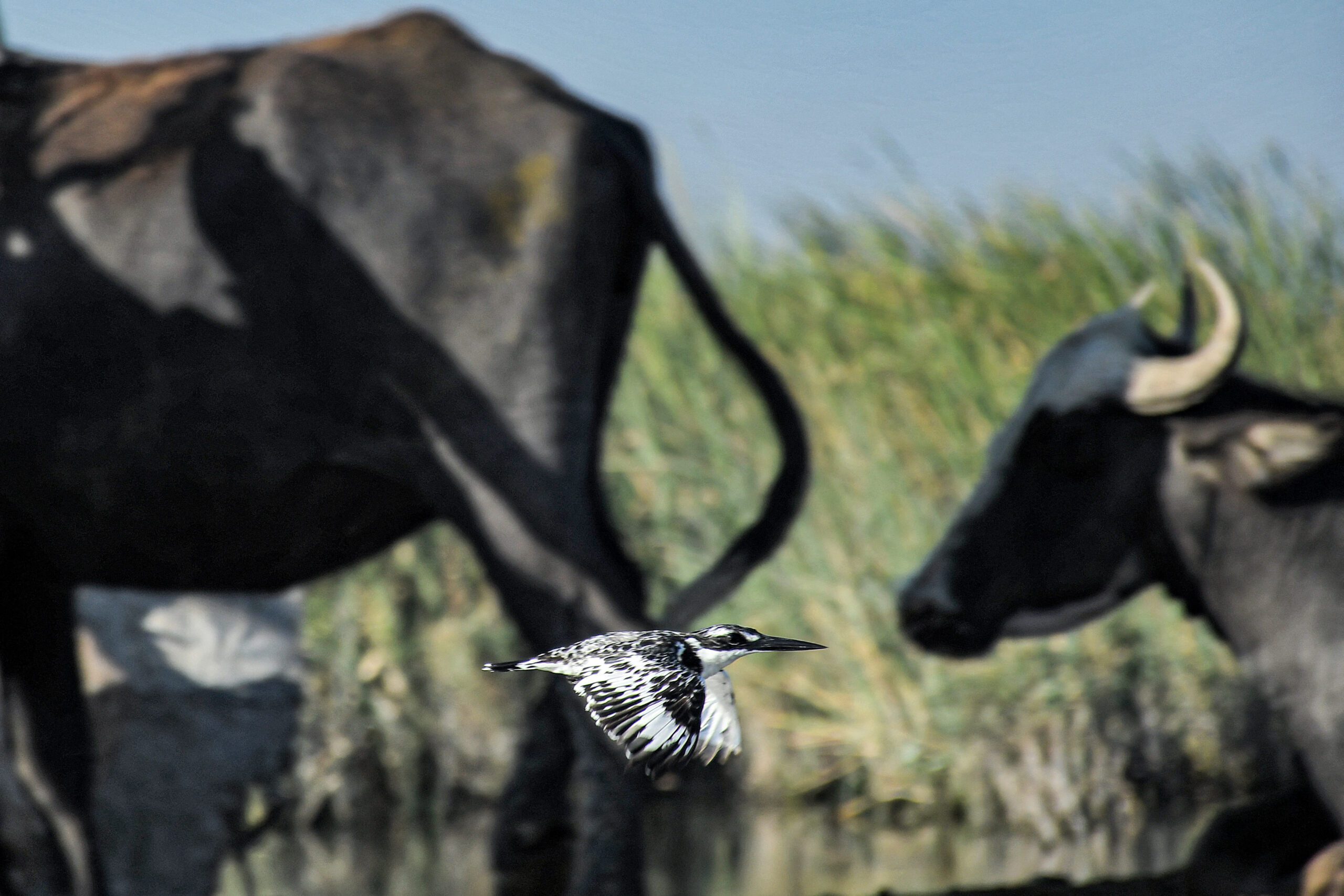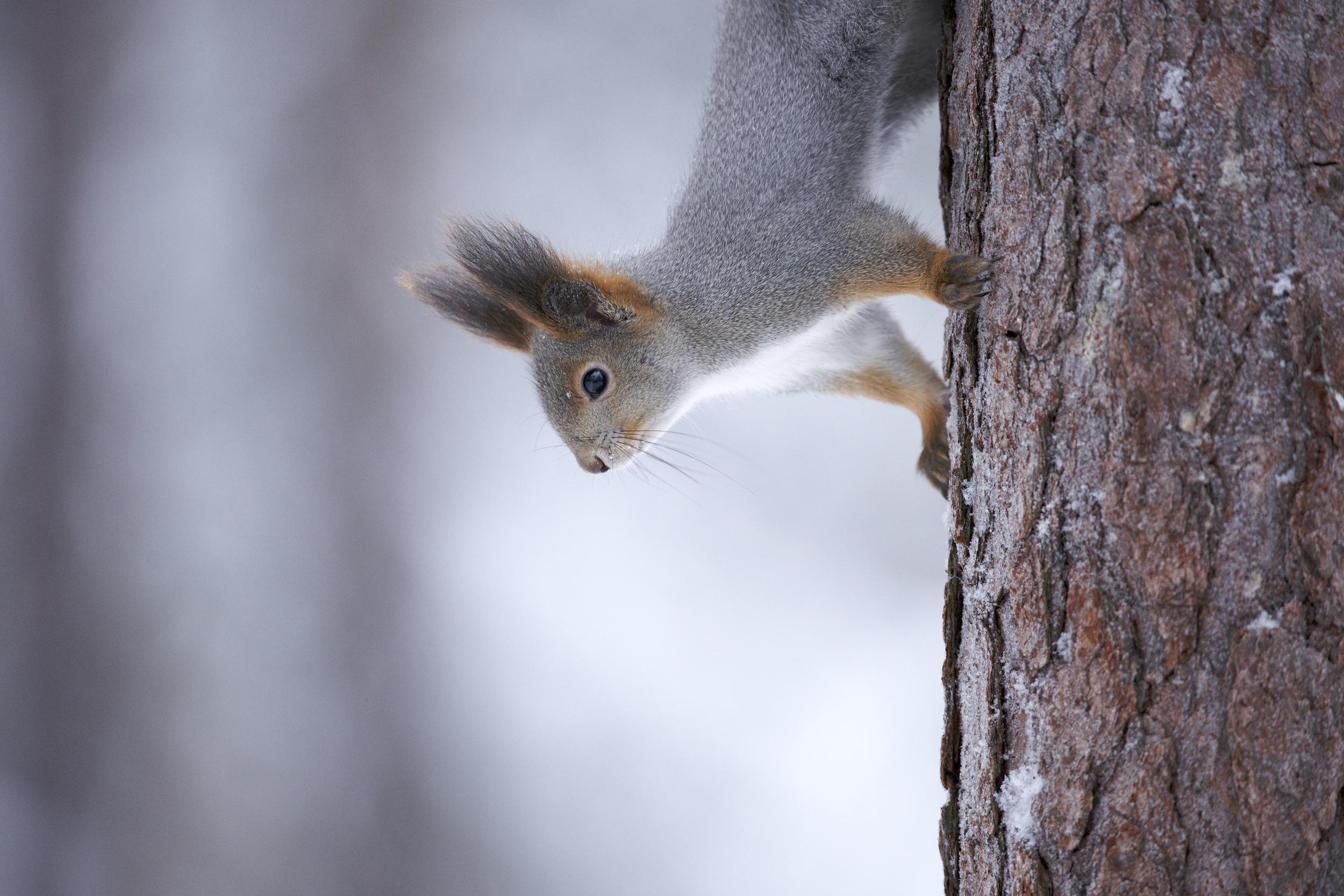
What are the effects of climate change on biodiversity?
Climate change is dramatically shaping our world today. But its consequences are not limited to humans alone. It also has far-reaching effects on the world’s biodiversity. Let's explore how climate change and biodiversity are interlinked – and how tackling one can help the other.
Climate change is an undeniable reality that is dramatically shaping our world today. Its impacts are profound, from rising temperatures and melting ice caps to extreme weather. But its consequences are not limited to humans alone. It also has far-reaching effects on the world’s biodiversity. This is often overlooked, yet it is interlinked.
In just over 40 years, wildlife populations showed a dramatic decline of 69% on average. The IPCC reports that around 20-30% of species could die out if global mean temperatures go up by 1.5-2.5 degrees. Yet the global average surface temperature has risen by roughly 1 degree Celsius. The data speaks for itself, painting a clear picture of the current state of biodiversity and climate change.
The effects of climate change on biodiversity
Biodiversity, or the ‘diversity of life’ on Earth, is essential for the planet’s health and survival. But the effects of climate change are becoming increasingly clear. Extreme weather events are happening more often. The timing of biological events is changing. Our wildlife is disappearing. But its impacts are not felt the same across the planet, as some regions and species are more at risk than others.
Climate change is having a greater impact on the poles, tropical rainforests, and coastal areas than anywhere else in the world. This could have far-reaching consequences for the planet’s health; and our future.
Rising global temperatures leads to habitat loss on land and sea
Rising global temperatures, also known as ‘global warming’, is one of the most important aspects of climate change. It refers to the increasing greenhouse gases, like CO2 and methane, in the atmosphere, which trap the sun’s heat. This trapped heat is related—directly or indirectly—to widespread habitat loss on both land and in the sea.
On the surface, polar ice caps and glaciers are melting. This is causing sea levels to rise and encroach on coastal habitats and the Arctic tundra. Not only this, but global rainfall patterns are being affected as well. The changes in weather patterns can lead to extreme environmental changes, like ‘desertification’. This is when wild habitats like grasslands or shrublands slowly turn into deserts.
🐝 Take action to protect pollinators
Pesticides are everywhere: in our playgrounds, parks and streets – and it’s killing pollinators and insects.
This year the UK government finally banned the emergency use of bee-killing pesticides. Now they must go further and ban harmful pesticides in our local areas, to help protect our pollinators.
Together we can make it happen. Will you sign the petition?
In the oceans, CO2 concentrations are now higher than they have been in the past 800,000 years. As a result, our seas are getting warmer, and the oceans are becoming more acidic. These conditions are known to cause mass coral bleaching. To date, scientists have identified six coral bleaching events since 1998, most notably on the Great Barrier Reef. This is of concern since coral reefs are one of the most biodiverse and valuable ecosystems on Earth.
Changing weather patterns disrupt seasonal lifecycles and events
Climate change also affects biodiversity by disturbing the timing of natural cycles and events. Frequent changes in weather patterns, such as early springs or warm winters, can disrupt the natural rhythm of life. Animals often take cues from their environment when making important decisions, like when to migrate or when to reproduce. So any big changes in weather patterns can mean biological events fall out of sync and happen at different times. For example, birds arriving at breeding grounds when the food source is scarcer. This can threaten their survival as well as their breeding efforts.

Climate breakdown can also lead to an unpredictable outcome for the functioning of entire ecosystems. In almost all cases, biodiversity declines despite a ‘degree of redundancy’, such as a species being replaced by another. For example, the number of North American monarch butterflies has been shrinking over the years. And this decline has been linked to climate change.
Extreme weather and frequent weather-related disasters harms wildlife
Climate change is causing extreme weather like storms, floods and wildfires to happen more often and be more severe. Such tragic events not only affect humans, but they also destroy habitats and kill wildlife. As an example, the 2019-20 Australian bushfires burned almost 19 million hectares of land. It also affected nearly three billion animals, including koalas, wombats, kangaroos and wallabies. Besides, they can have long-term effects on the remaining survivors and even us, humans.
We can also see the effects of weather-related disasters on biodiversity in the UK. According to the National Trust, the extreme weather in 2022 was very bad for UK wildlife. Dried-up rivers and streams affected wild populations of natterjack toads in northwest England. The shorter flowering season also meant less food for insects and birds, such as bumblebees, butterflies and redwings.

Climate change creates pathways for the introduction and spread of invasive species
The geographic ranges of many animal and plant species have been shifting from low to high latitudes in response to climate change. This can create new pathways for invasive species that are not native to a particular area. And often, they are introduced by human activity.
When the climate changes, invasive species can move into new habitats and compete with native species for food, shelter and space. They can also introduce new diseases. For example, red squirrels used to be a common sight in the UK—the only native squirrel species. But their population has been declining for many years since the introduction of grey squirrels from North America in the 1800s.
The larger grey squirrels are much better at adapting to changing conditions than the smaller red squirrels. They are also known to carry the ‘squirrelpox’ virus. Grey squirrels are immune to this disease, but it kills the red squirrels. This causes population decline. Red squirrels are now only found in Scotland, parts of northern England and Wales, and small islands near England’s southern coast.

It leads to an increase in human-wildlife conflict
Climate change also contributes to human-wildlife conflict. As wild habitats shrink and food sources become scarce, animals are forced to move closer and closer to human settlements. This leads to increased interactions between humans and wildlife, often resulting in harm to both parties. From the loss of crops and livestock to the loss of human lives and animals involved. Besides, there is also the risk of disease transmission in both animals and humans.
Human-wildlife conflict is an upcoming global issue. It poses a significant challenge for biodiversity conservation, as well as for our health and well-being.
It contributes to wildlife decline and extinction of species
The extinction of species is perhaps the most worrying effect of climate change on biodiversity. The most at-risk are those with limited climate ranges, like polar bears and arctic foxes. It is also the case for animals with restricted habitats and small, isolated populations. Galapagos giant tortoises and marine iguanas are a few good examples.
Our current estimates suggest that wildlife populations have declined by an average of 69% since 1970. And species are disappearing between 1,000 and 10,000 times higher than what is natural. Other human activities, such as deforestation and overfishing, are also cause for concern. The loss of species not only reduces biodiversity, but it also indicates that the ecosystem is breaking down. If we continue as usual, there is a risk of global system failure unless we take urgent action. For example, if we lose bees, we may lose all the plants that they pollinate. This will then affect all the animals that eat those plants, including humans. A world without bees could mean a rise in global food insecurity unless we take urgent action.
How can we protect biodiversity from climate change?
To protect biodiversity from climate change, we need to focus on big solutions. We need large-scale, system-wide changes, which can include:
- Reducing greenhouse gases. This can be done by using energy more efficiently, changing how we use energy, and using more renewable sources like solar and wind.
- Implementing conservation policies that consider the impact of climate change on wildlife. This includes restoring damaged ecosystems, protecting more wild spaces, and promoting environmental justice.
- Creating more wildlife corridors and protected green spaces. This allows species to move freely between habitats.
- Funding research and monitoring of wildlife. This is critical for endangered species and ones at risk from climate change. Doing so can help us understand and plan better ways to protect biodiversity.